Next to home-grown tomatoes, nothing compares to the freshness and pungent flavor of home-grown garlic! Once you experience just how incredibly fresh and juicy garlic tastes when it’s grown in your own garden, you’ll never want to buy garlic from the grocery store again. Promise.
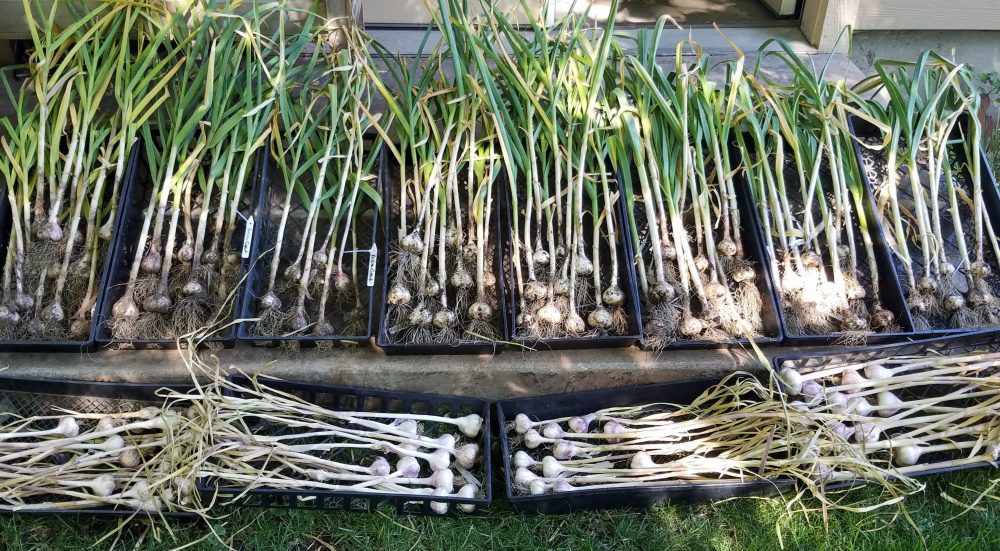
Garlic (Allium sativum), a member of the onion (Amaryllidaceae) family, is in the same genus classification as onion, leek, chive and shallot. Garlic is one of the most ancient of vegetables, and most likely one of the first vegetables to be cultivated. Originally from Central Asia, it has been used as a medicinal plant and a food source for over 7,000 years.
Types of Garlic
There are two major types of Garlic: softneck (Allium sativum) and hardneck (Allium ophioscorodon). Between the two garlic types there are 11 subtypes, each with different characteristics from growing climates to flavor profiles. Digging deeper, it’s estimated that there are over 600 garlic cultivars!
Softneck Garlic
Softneck garlic favors a warmer growing climate (USDA Zones 5 and above) and is known for its soft, braidable leaves. It is milder in flavor and produces large bulbs with up to 25 cloves. It’s the most common garlic type grown in the U.S. and the one most often found in grocery stores – for good reason – it can be stored for 6 to 12 months. The skins encasing the bulb and cloves adhere very tightly, making them difficult to peel off, but it is also the reason why they store so well.
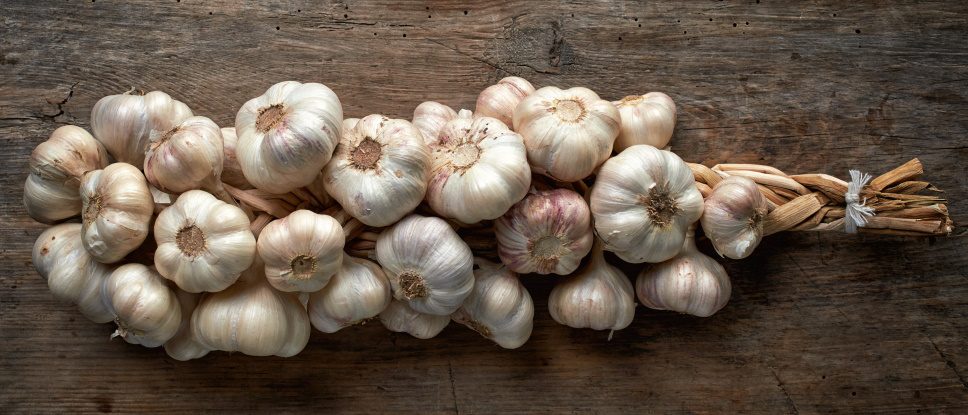
The two types of softneck garlic are Artichoke and Silverskin. Artichoke types are large and feature 12 to 25 cloves that overlap in 3 to 5 layers (similar to an artichoke). Artichoke types of garlic mature earlier than Silverskins. A popular regional cultivar is ‘Inchelium Red’, discovered on the Colville Indian Reservation in Washington State, which offers a mild flavor and is great when baked. Large Artichoke bulbs can be stored for up to 9 months.
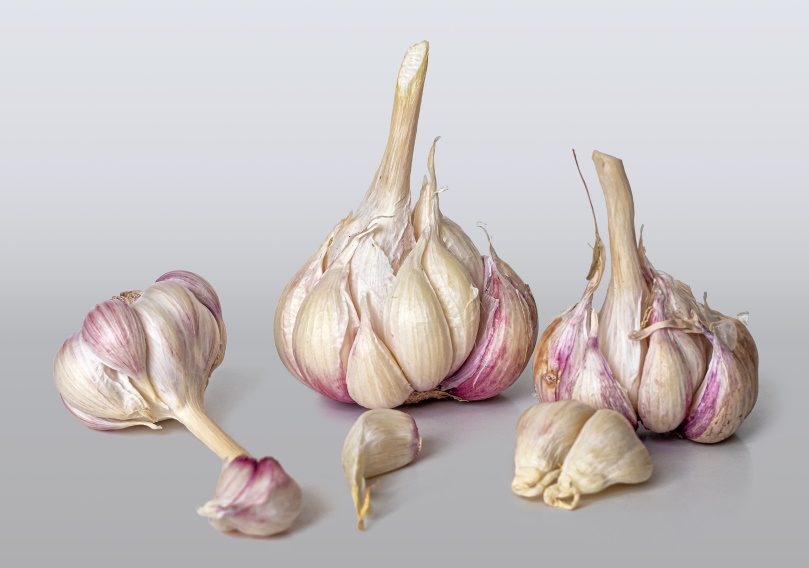
Silverskin types of garlic take a little longer to mature and are more adaptive to different growing climates. The Silverskin bulbs are a bit smaller, but still produce many tightly packed cloves. They are known for their exceptional storage life and are the garlic type most commonly used for garlic braids. For northern growing regions, try ‘Idaho Silver’, ‘St. Helens’ and ‘Nootka Rose’.
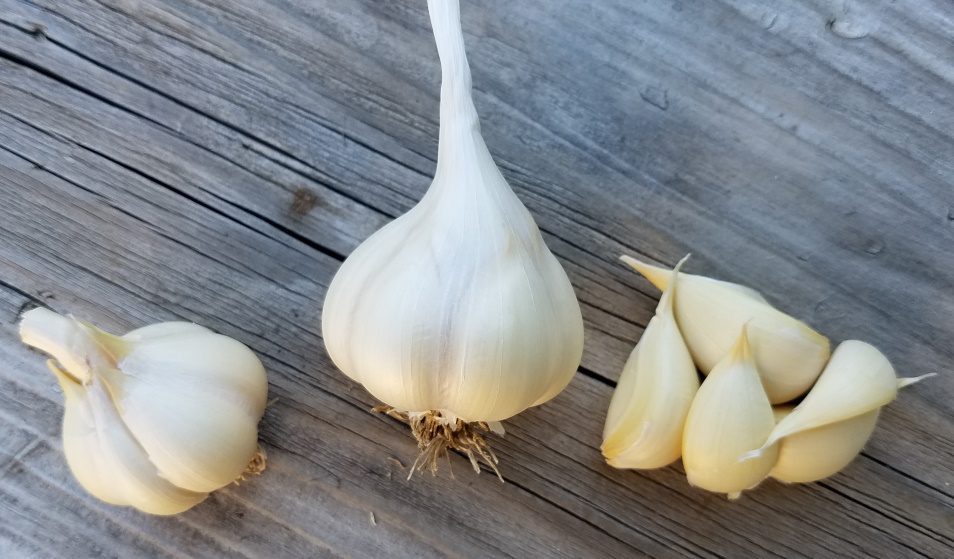
Hardneck Garlic
Hardneck garlics we commonly see today evolved from wild garlic. Hardneck garlic is exceptionally cold-hardy and is grown mostly in the northern regions of the country (USDA Zones 5 and below). Hardneck garlic has fewer cloves per bulb compared to softneck garlics (usually under 10), but the cloves are much larger. Some varieties only have three or four very large cloves! Hardneck garlics have a much shorter storage life – usually under 6 months – but they are easier to peel!
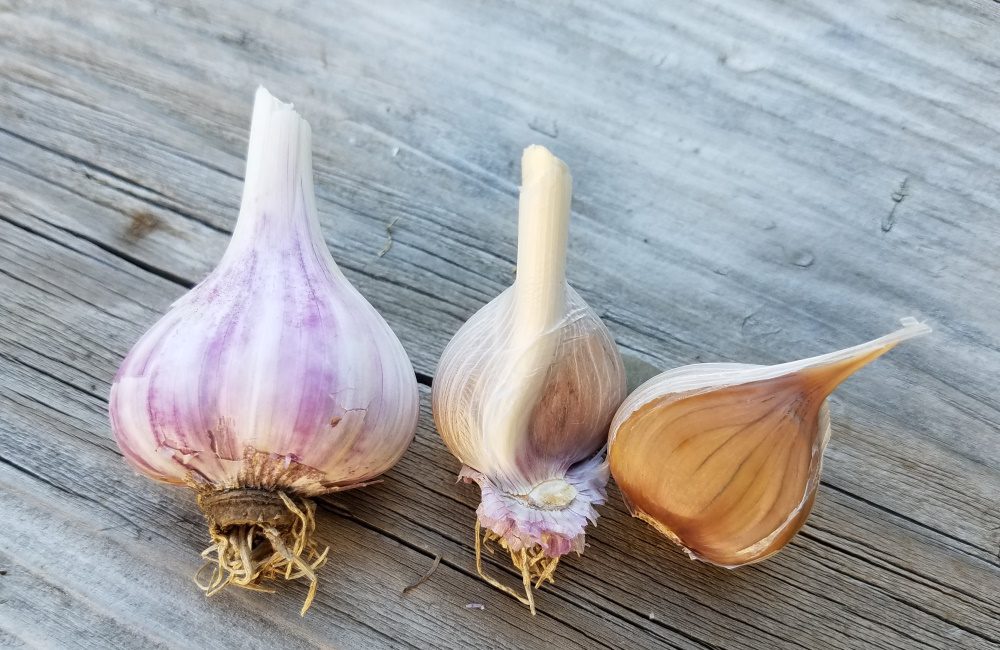
The main difference between softneck and hardneck garlic is that hardneck garlic produces a stiff flower stalk called a “scape” (hence its name). If the scape is left to mature, tiny bulbils form, which are essentially baby garlic. These bulbils can be planted, but it takes several years before they mature into a decent-sized garlic bulb. It’s more efficient to replant large cloves from your harvested garlic bulbs.
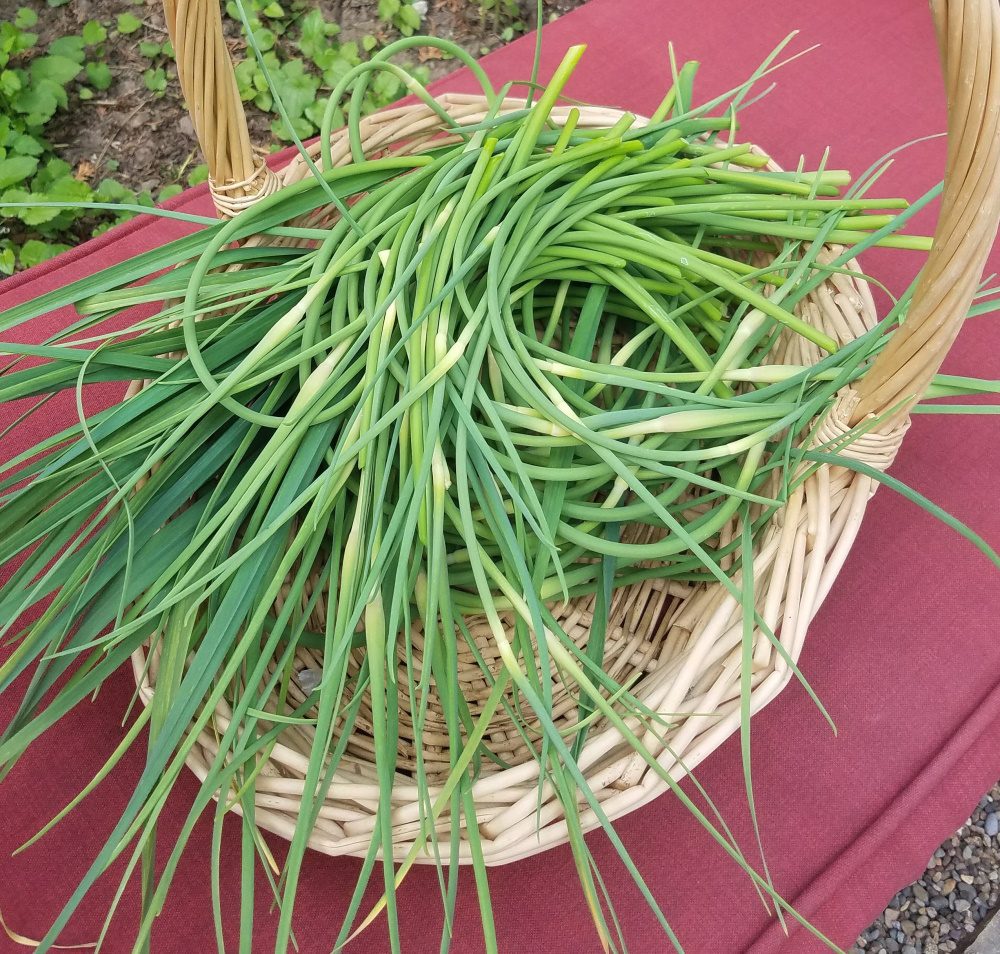
To get the largest bulbs possible, cut off the curlicue scapes when they appear in late spring. This allows the plant to channel its energy into producing bigger bulbs, instead of producing seed heads. But don’t toss those garlic scapes into the compost pile! Scapes are a culinary delight and can be substituted in any recipe that calls for garlic – my favorite is garlic scape pesto.
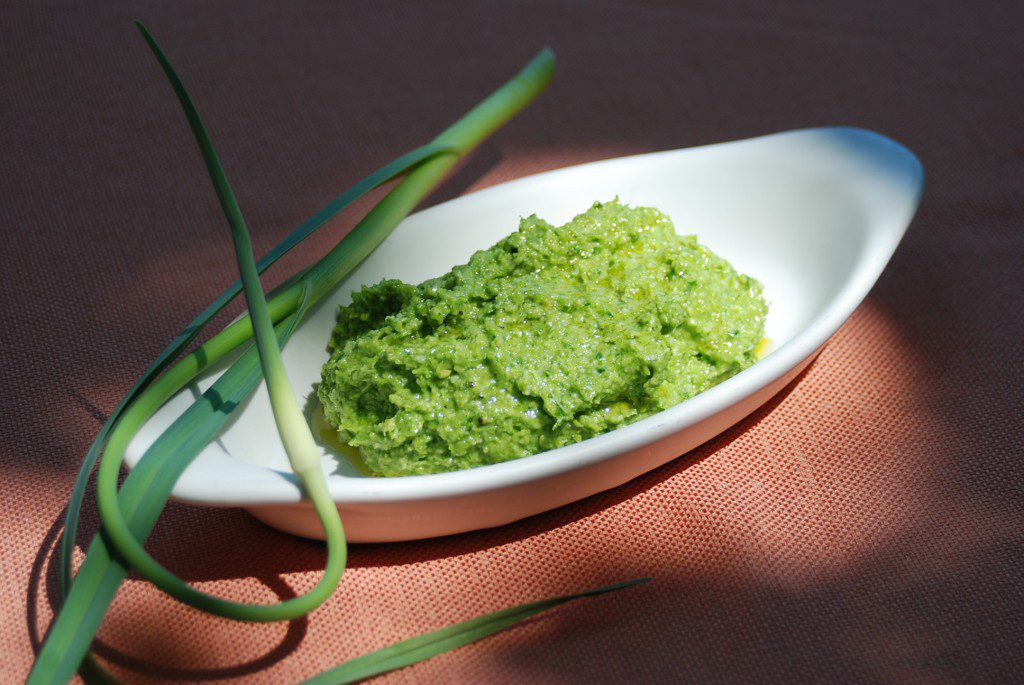
There are nine subtypes of hardneck garlic: Purple Stripe, Marbled Purple Stripe, Glazed Purple Stripe, Rocambole, Porcelain, Turban, Asiatic, Creole, and Middle Eastern. Cultivars of the Purple types, Rocambole and Porcelain are the most common types grown in the U.S.
Popular Hardneck Types and Cultivars for Northern Climates
- Purple Stripe originated in the Republic of Georgia. Bulbs feature vivid purple striping; 8 to 10 cloves per bulb; Mild flavor great for roasting. Late season harvest. Try ‘Chesnok Red’ (also known as ‘Shvelisi’).
- Marbled Purple Stripe and Glazed Purple Stripe both originated in Eastern Europe and Russia. Related to Purple Stripe with minor color variations; the Glazed stripe has more of a metallic silver/purple color. Hotter in flavor with 6 to 8 cloves per bulb. Mid-season harvest. Try ‘Purple Glazer’.
- Rocambole is perhaps the sweetest of all the garlics. Light brown to brown in color, with 8 to 12 cloves per bulb, Rich, sweet, complex flavor. Early to mid-season harvest. Try ‘Russian Red’, ‘Spanish Roja’, or my local favorite, ‘Killarney Red’ (developed and grown by Killarney Farms in North Idaho).
- Porcelain is very cold-hardy and excels in northern climates. Produces 4 to 5 large cloves, although some cultivars may only produce two huge cloves! Mid-season harvest. There are many Porcelain cultivars, but a good choice for our region is ‘Music’.

‘Chesnok Red’; Purple Stripe Hardneck 
‘Purple Glazier’; Glazed Purple Stripe Hardneck 
‘Music’; Porcelain Hardneck 
‘German Extra Hardy’; Porcelain Hardneck 
‘Russian Red’; Rocambole Hardneck 
‘Killarney Red’; Rocambole Hardneck 
‘Morrocan Creole’; Creole Hardneck 
‘Italian’; Silverskin Softneck
With so many garlic types and cultivars to choose from, how do you decide? Check out the offerings at your local Farmer’s Market and talk to the growers there. If you decide to purchase online, find growers from your region to ensure that the garlic you purchase will grow well in your climate.
But don’t forget to have fun! Garlic is so simple to grow you can experiment with several different types in one small growing space. Ready to get growing? Click to Read “How to Grow and Harvest Garlic.”
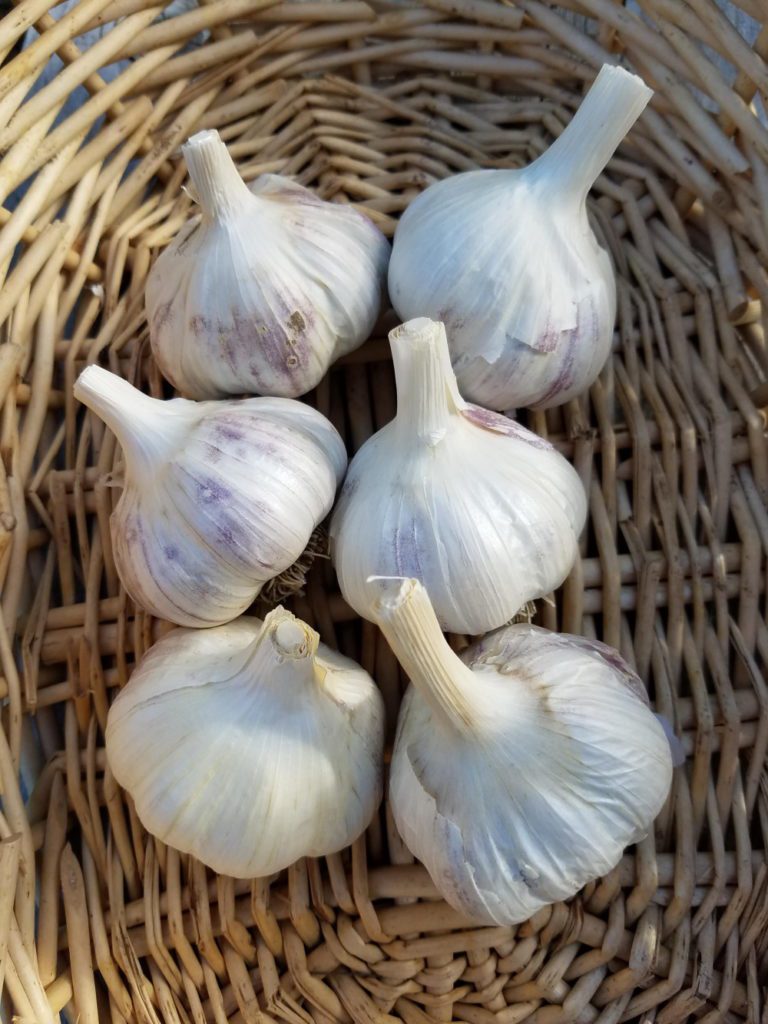
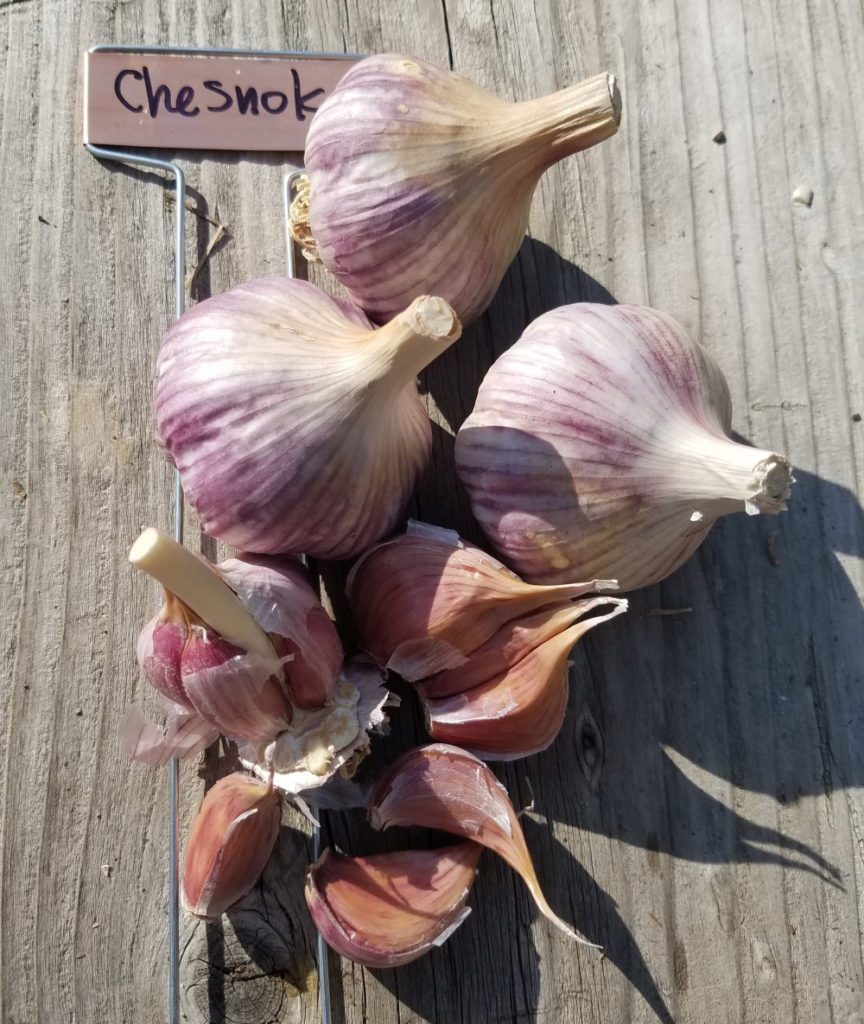
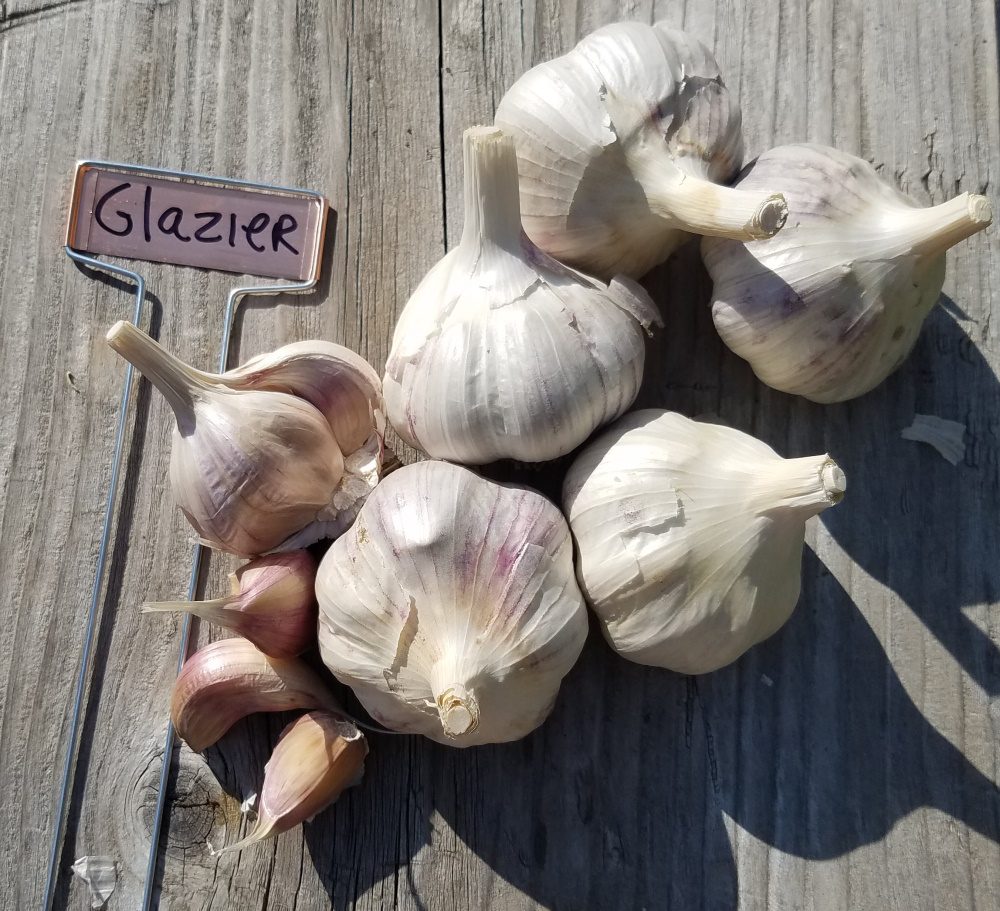

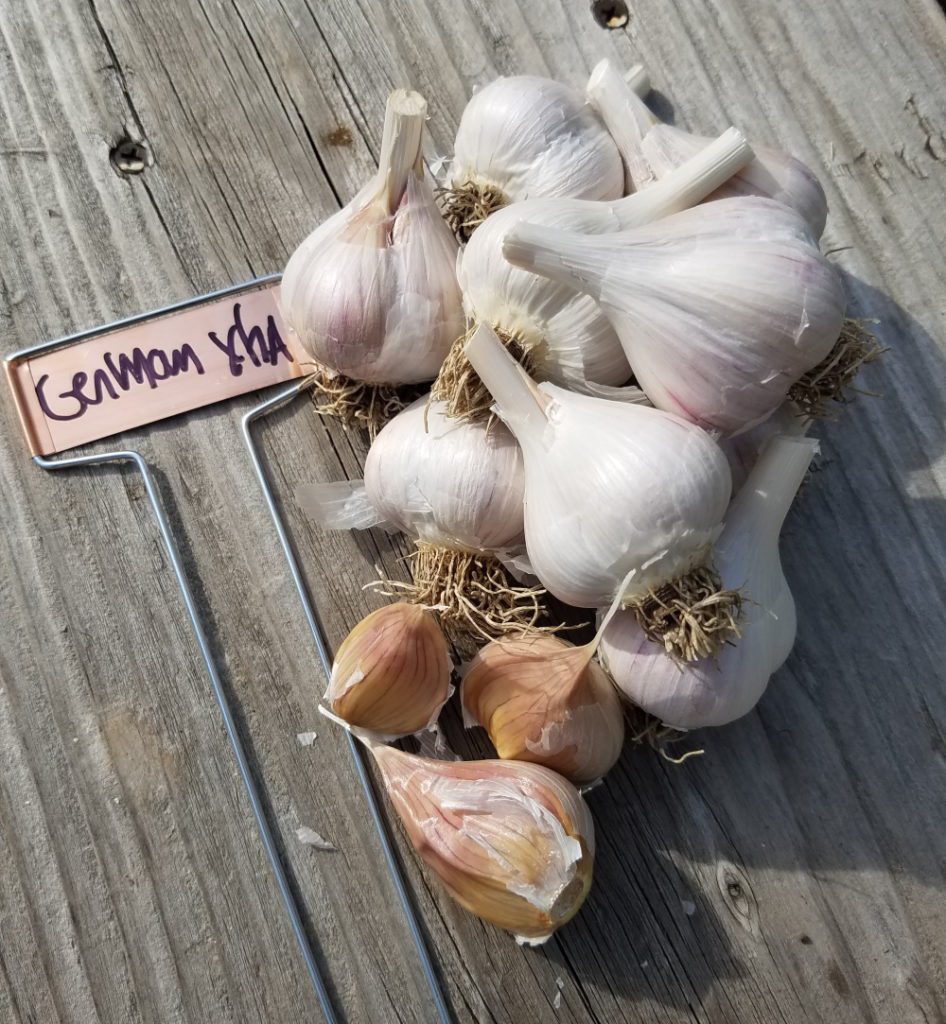

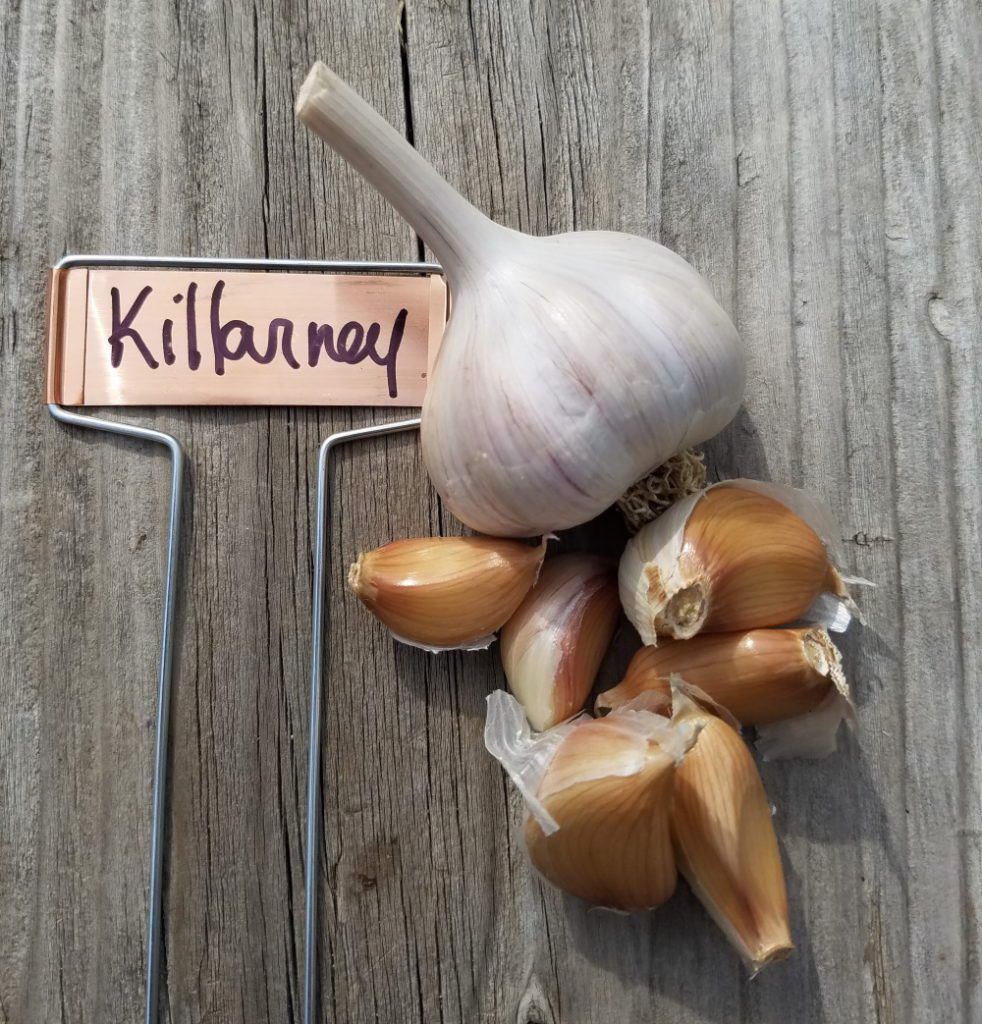
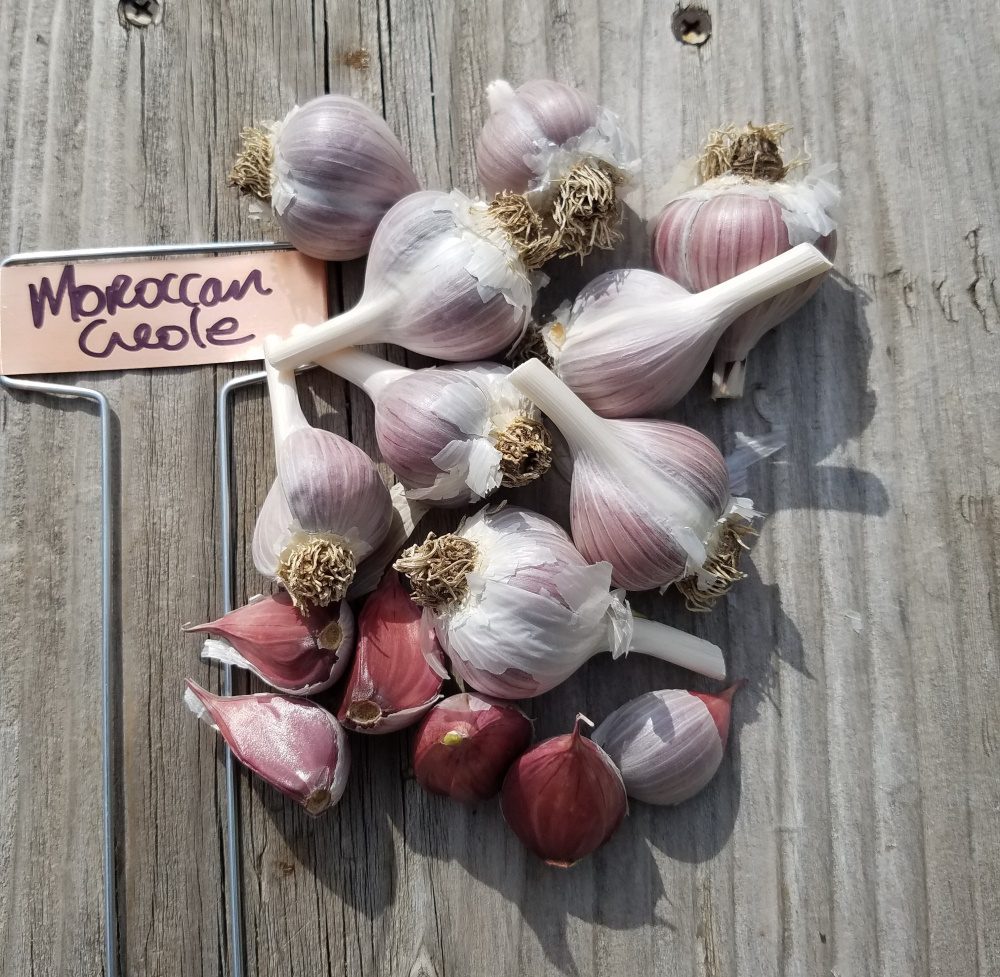



[…] Not sure what type of garlic to plant? Read Garlic Types to Grow in the Home Garden here! […]